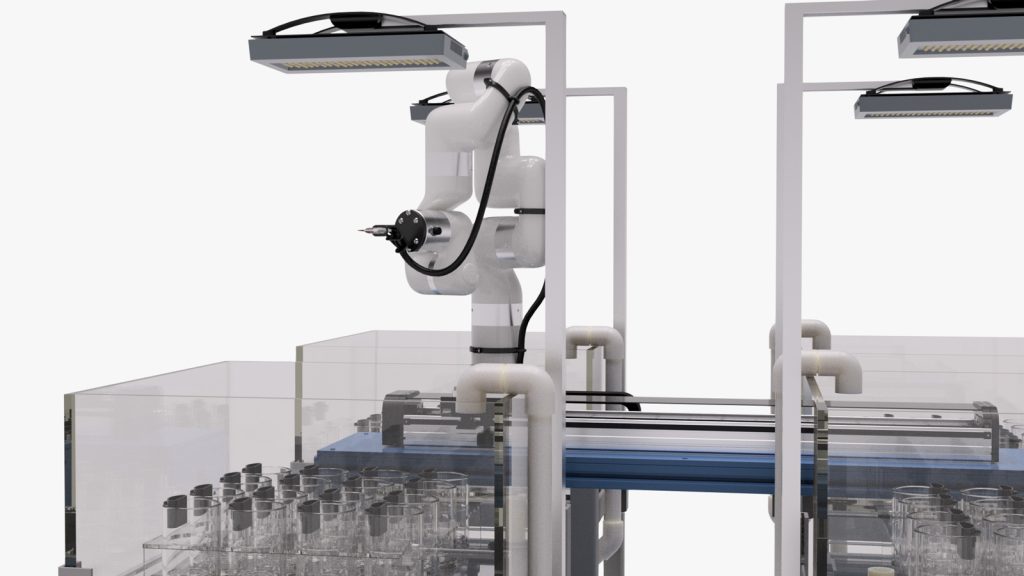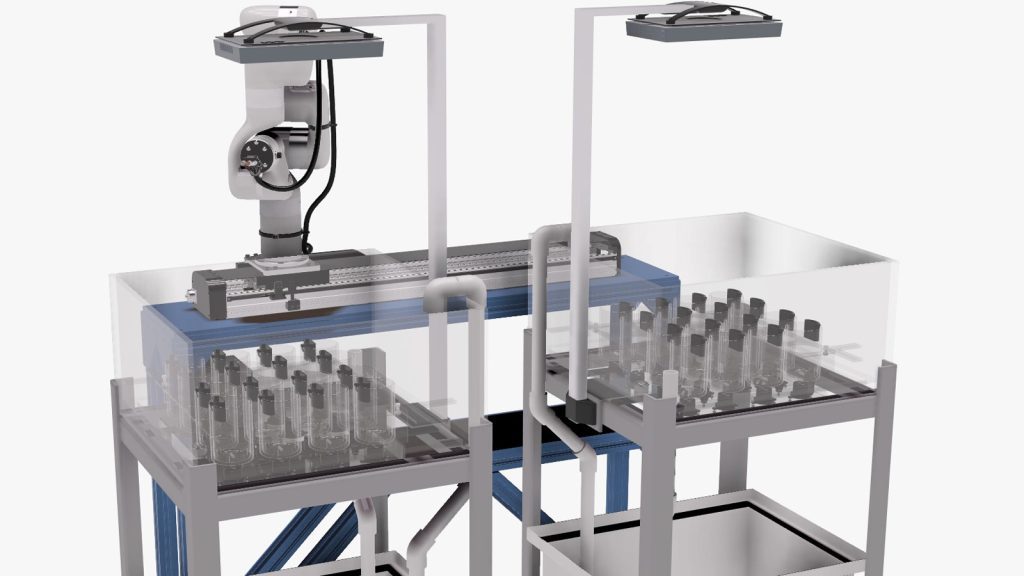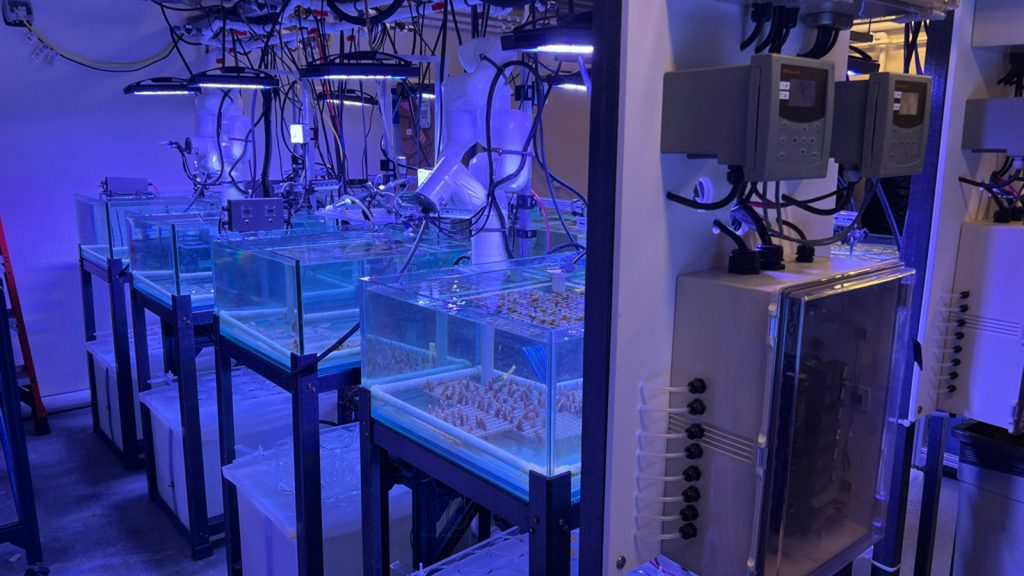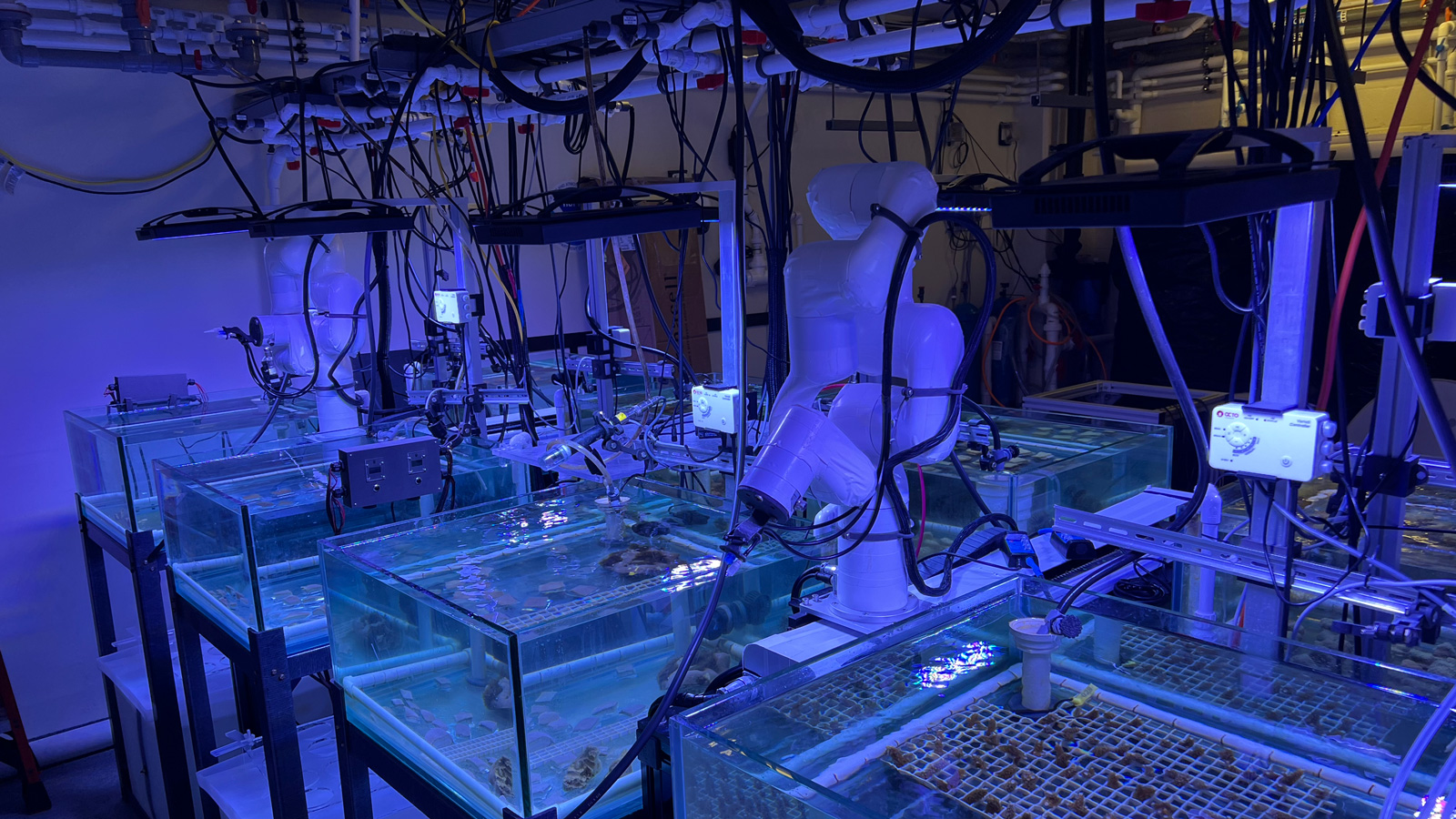Blue lights fill the room. The faint smell of salt emanates throughout the space as wires and tubes intricately suspended over robotic arms move along custom-built tracks over four rows of tanks filled with seawater – and fragments of critically-endangered corals.
In the Experimental Reef Lab, scientists at NOAA’s Atlantic Oceanographic and Meteorological Laboratory (AOML) and the Cooperative Institute for Marine and Atmospheric Studies (CIMAS) are investigating how crucial reef-building coral species are affected by the impacts of climate change using a suite of open-source robotic arms designed and built at AOML.
The STAR System within the AOML Coral Program Experimental Reef Lab
The “STAR System,” or the Sequential Treatment Application Robot, was created by the Coral Program’s Ian Enochs, Nash Soderberg, and Ana Palacio to facilitate and streamline research on the effects stressors will have on corals on an unprecedented scale.
Hypoxia, higher sea surface temperatures, ocean acidification, excessive nutrient levels, and diseases like Stony Coral Tissue Loss Disease (SCTLD) are all known to devastate coral reefs, but scientists now seek to understand whether combining these stressors exacerbates or mitigates their impacts on coral species.
“We need to start taking this seriously and use the best state-of-the-art technology to tackle these issues. These stressors are impacting ecosystems, as well as millions of individuals over hundreds of kilometers, and our response needs to be appropriately scaled” says Ian Enochs, Ph.D., Principal Investigator of the AOML Coral Program.
Currently three STAR system robots are in operation – ARMand, ARManda, and now Michanical StudivARM, after CIMAS Associate Scientist Michael Studivan, Ph.D. – each of which was built entirely from scratch at AOML using open source designs.


Open-source, computer-aided design (CAD) of the STAR System
With two types of pumps and three injector tips on the end of each arm, scientists can inject specific dosages of nutrients, disease, and other variables into each tank to manipulate the conditions while the robots operate on autopilot for months on end. They move from tank to tank along a custom-built track based on a program Enochs and Soderberg constructed using a combination of Python, R, and LabView to tell the robots what to put in each tank and when, how much to dose, and how long to dose.
First implemented in August 2023, the STAR system has been successfully used in an experiment run by CIMAS Assistant Scientist Ana Palacio, Ph.D. to investigate the combined effects of warming, high nutrients, and Stony Coral Tissue Loss Disease transmission on the critically endangered coral Orbicella faveolata (Mountainous Star Coral).

The STAR System in the Experimental Reef Lab.
“While coral reefs face a myriad of threats, research into the combined effects of multiple stressors has been constrained, partly due to escalating logistical challenges with increasing treatments complexity,” says Palacio. “The STAR system has enhanced our capability to simultaneously investigate the influences of multiple stressors, while maintaining high treatment precision and independence.”
The study ultimately found a greater probability of disease transmission and mortality among the coral fragments exposed to lower temperatures (28 degrees Celsius, 82.4 degrees Fahrenheit) compared to those exposed to higher temperatures (31 degrees Celsius, 87.4 degrees Fahrenheit), with little effects of nutrient dosing. With research ongoing, the STAR system has opened possibilities to advance research, enabling scientists to complete other tasks while still acutely manipulating conditions in the tanks during experiments for long periods of time.
While the robotic arms were designed to investigate the combined impacts of nutrients, warming, and disease on reef-building corals, they are highly customizable and may be used for experiments involving a diverse array of treatments and marine species. With the open-source manual published earlier this month, others can build the same system for their own research to advance much-needed science using cutting-edge and cost-effective technology.
In the Experimental Reef Lab (ERL), scientists at AOML already have plans to expand the use of the STAR system for future experiments and on a larger scale. With upgrades including cameras to observe the tanks and changes in the corals over time along with newly funded projects, the team is more hopeful than ever to identify thresholds corals can endure for specific stressors – and even enhance their resilience to those conditions expected of the future.
